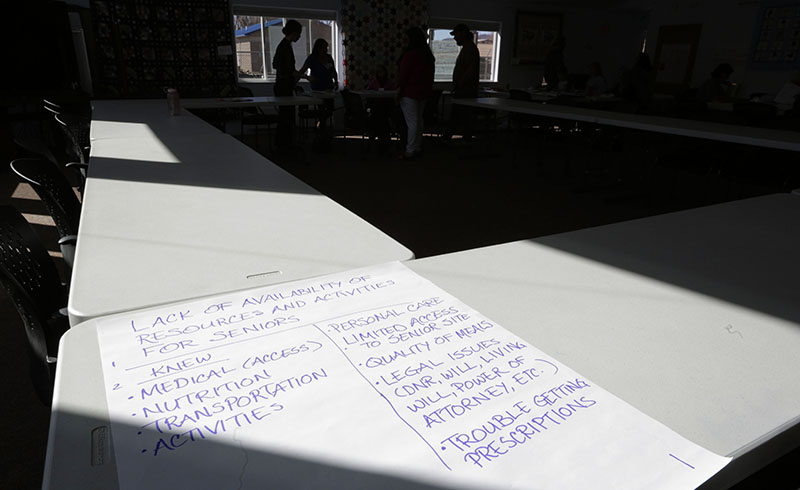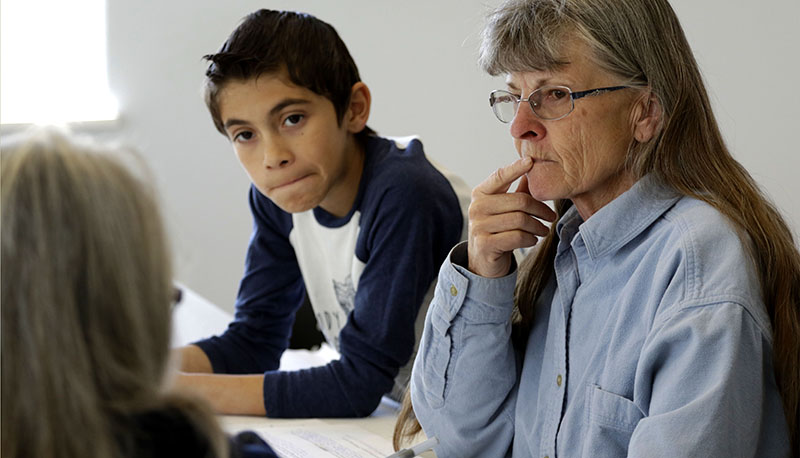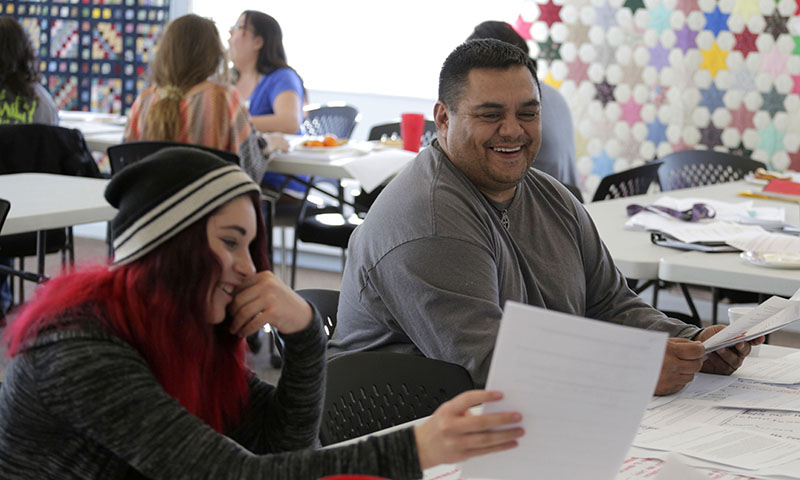Self-Determining Saguache
Leer en españolThe video above was filmed at a training in Saguache in January, when local residents introduced the town to community organizers in the region. Created by Chance Multimedia
By Kristin Jones
In 2009, downtown Saguache was named one of the state’s most endangered places by the nonprofit Colorado Preservation, Inc. Unlike artsy Salida, 45 miles to the north, the old silver- and gold-boom town hasn’t been lacquered with modern-era tourism dollars, and many of its storefronts were boarded up and decaying.
Since then, the town’s main street (a.k.a. 4th Street) has undergone something of a revitalization, with new businesses opening up and old ones benefiting from an increase in activity. There’s the Cozy Castle movie theater, an art gallery, a bustling diner and, as ever, a place to peek into newspaper history at The Saguache Crescent, which still prints its weekly paper with a linotype machine.
“I would just like to bring everybody back,” says Laurie Vigil, who works at the Oasis restaurant and drives the school bus, and who has contracted with The Colorado Trust to work as a community organizer here. “We’d like to be a happy place for our kids to grow up.”
Along with her neighbors, Vigil has been working on creating a plan for the community that goes beyond the historic buildings. On a recent Sunday in late February, residents reported back to each other on their latest findings about the community; they’d sought out officials and surveyed their neighbors about food access, transportation and challenges facing young people and seniors in this San Luis Valley town of 500.
Even long-time Saguache residents came across surprises in their information-gathering: A large number of the local school kids are homeless, a school official told the group that was researching food. Older people need help not just with health care and nutrition, but also with complicated things like awarding power-of-attorney, and with basic things like cutting their toenails, surveys revealed to the seniors group. A lack of child care for babies and toddlers was a known problem, but the sheriff said he thought the kids most at risk were aged 11 to 14.
“When we stop being cute,” offered a 16-year-old in the group. (Her mother insists that she never stopped being cute.)
Throughout the meeting, there were moments when the residents shared their own experiences as a way of illuminating the challenges faced by the community. One man recalled living in his car when he was a kid: “Food was expensive, because we didn’t have a refrigerator.”
It also became clear how different issues thread together in people’s lives. Seniors said they felt isolated, in part because of a lack of transportation that might bring them together. Kids whose dinners whittled down to packaged ramen noodles by the end of the month had trouble concentrating in school.
These are some of the same issues that lead to health disparities on a national scale, but nobody here was talking that way. Instead, they were actively imagining what their community could be: What if there were public transportation here, or free dinners for kids and seniors? What if people committed to shopping at the local grocery store?
Lorraine Lopez is another local organizer. She was born here, and likes to point out the old school house to visitors. When I asked what she remembers, she paints a picture of standing slightly apart at school, because of her family’s poverty and Hispanic heritage: not speaking any English on her first day; watching other kids race their bikes around the building, when her family couldn’t afford a bike; yearning for the white bread and butter in the other kids’ lunches. Still, she doesn’t express any bitterness—just the opposite.
“It was the favorite part of my life, even though it was segregated,” says Lopez, now 72 and a substitute teacher. “It was the beginning of a great change in my life.”
Lopez says nearly every part of Saguache is infused with her memories from the past. She believes its biggest challenge is bringing together all of its people—white, Indian and Hispanic. Watching her neighbors convene at the Road and Bridge building on 3rd Street is giving her hope.
“It’s wonderful to watch,” she says. “To me, it amazes me. They know how to start getting it done. They want it.
“We are planting a seed.”



Saguache residents talked about issues in their community, and started creating plans for the future, at a meeting on Feb. 28. Photos by Joe Mahoney / Special to The Colorado Trust

